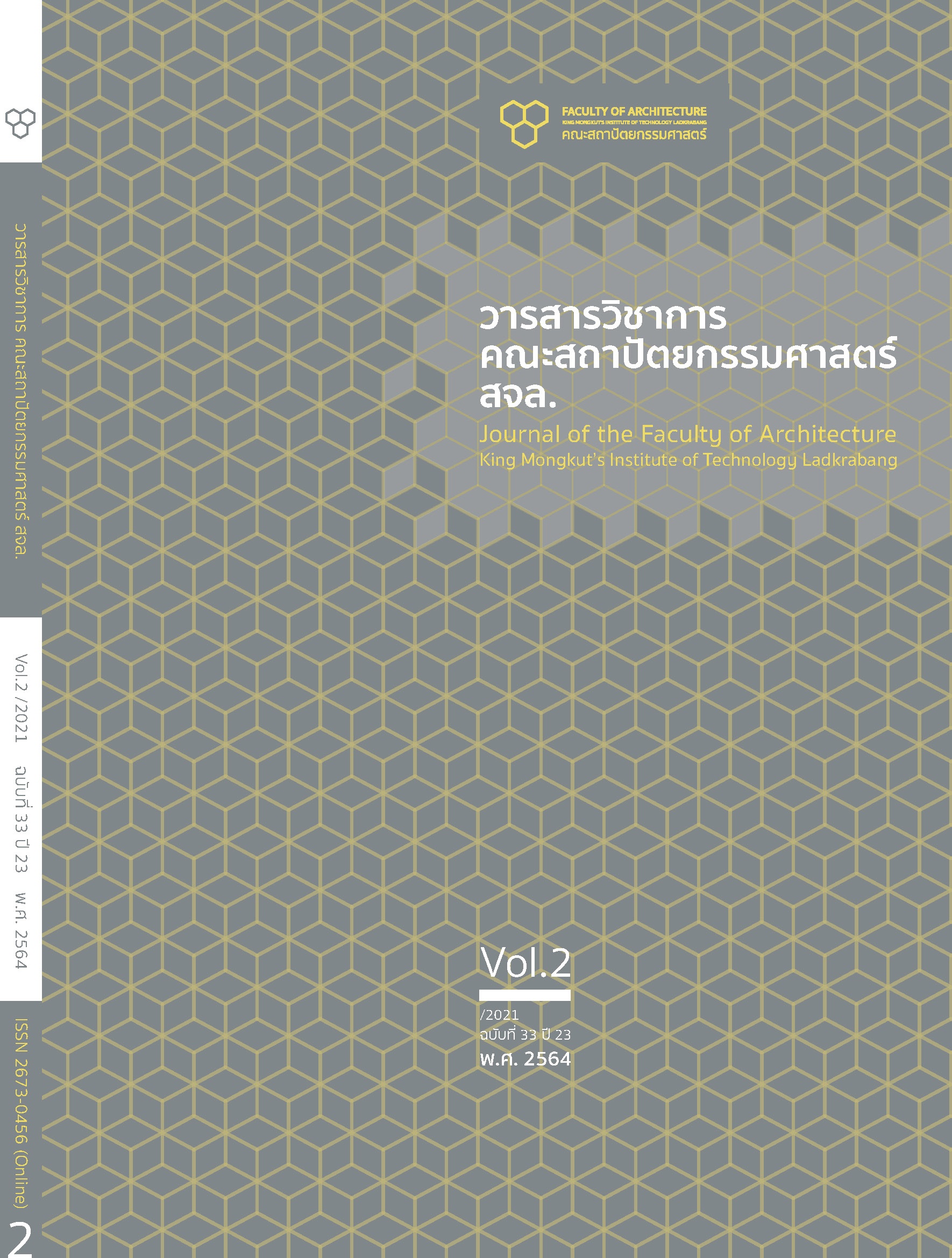A Transformation of Space in Pak Khlong Talad Concerning Concept of Dwelling and Usability of Space: An Introduction to Mobile Architecture Study
Main Article Content
Abstract
It is generally accepted that architecture is mainly related to humans and context. To develop architecture is to respond to the need of humans and to harmonize with the environment. As a result, architecture requires some “attribution” to enhance the ability that serves dwelling, which is the basis of living. It leads to the progress of architectural ideas about impermanence or any attribution that sets architecture free from permanence. This is the idea every architecture for human behavior should have.
Regarding the above-mentioned idea, the researchers attend to study a relationship between the Concept of Dwelling and Usability of Space, which concerning impermanence in architecture that describes through Transformation Attribution. Moreover, the research hypothesis is that different transformations of space can affect the Concept of Dwelling and Usability of Space. In addition, the researchers are interested to find the process or concept that explains the identity of this transformative architecture or “Mobile Architecture”.
To answer the research objective, the researchers assign a transformation of space to be an independent variable, whereas Concept of Dwelling and Usability of Space is a dependent variable, and an existing immobile architecture is a controlled variable. The researchers seek a relationship between these variables through the analysis and addresses a coefficient for the comparison results. The outcome is later synthesized and proceeded to find a relationship as well as an explanation of Mobile Architecture that leads to a discussion of how Mobile Architecture in this research coordinates with the other previous definitions of Mobile Architecture. This is including of a further study of method, which the researchers aim to develop to be a Ph.D. dissertation in Doctor of Philosophy Program in Architecture, Faculty of Architecture, Silpakorn University.
Article Details
This work is licensed under a Creative Commons Attribution-NonCommercial-ShareAlike 4.0 International License.
Copyright Transfer Statement
The copyright of this article is transferred to Journal of The Faculty of Architecture King Mongkut's Institute of Technology Ladkrabang with effect if and when the article is accepted for publication. The copyright transfer covers the exclusive right to reproduce and distribute the article, including reprints, translations, photographic reproductions, electronic form (offline, online) or any other reproductions of similar nature.
The author warrants that this contribution is original and that he/she has full power to make this grant. The author signs for and accepts responsibility for releasing this material on behalf of any and all co-authors.
References
ต้นข้าว ปาณินท์. (2553). คนและความคิดทางสถาปัตยกรรม. กรุงเทพฯ: สำนักพิมพ์สมมติ
Philip Jodidio. (2011). Temporary Architecture Now!. Köln: Taschen
Yona Friendman. (1959). Pro Domo. Barcelona: ActarD Inc.
Tom Corkett. (2014). New Portable Architecture. Designing Mobile & Temporary Structures. China: Promopress
Robert Kronenburg. (2008). Portable Architecture: Design and Technology. Berlin: BIRKHÄUSER
Adam Hardy. (2011). The Expression of Movement in Architecture. Retrieved from: https://www.tandfonline.com/doi/abs/10.1080/13602365.2011.598698
Robert Kronenburg. (2010). Adaptable Architecture-Flexible Dwelling. Pescara: Pescara journal Piano Progetto Cittá. Retrieved from: https://www.academia.edu/35672709/Adaptable_Architecture_Flexible_Dwelling
Sushant Verma. (2020). Responsive to Adaptive- The shifting trends in Architecture. USA: Arch2o. Retrieved from: https://www.arch2o.com/responsive-to-adaptive-the-shifting-trends-in-architecture/
Richa Parmar. (2017). Know About the Transformation of Building in Architecture. India: GharPedia. Retrieved from: https://gharpedia.com/blog/transformation-of-building-in-architecture/


